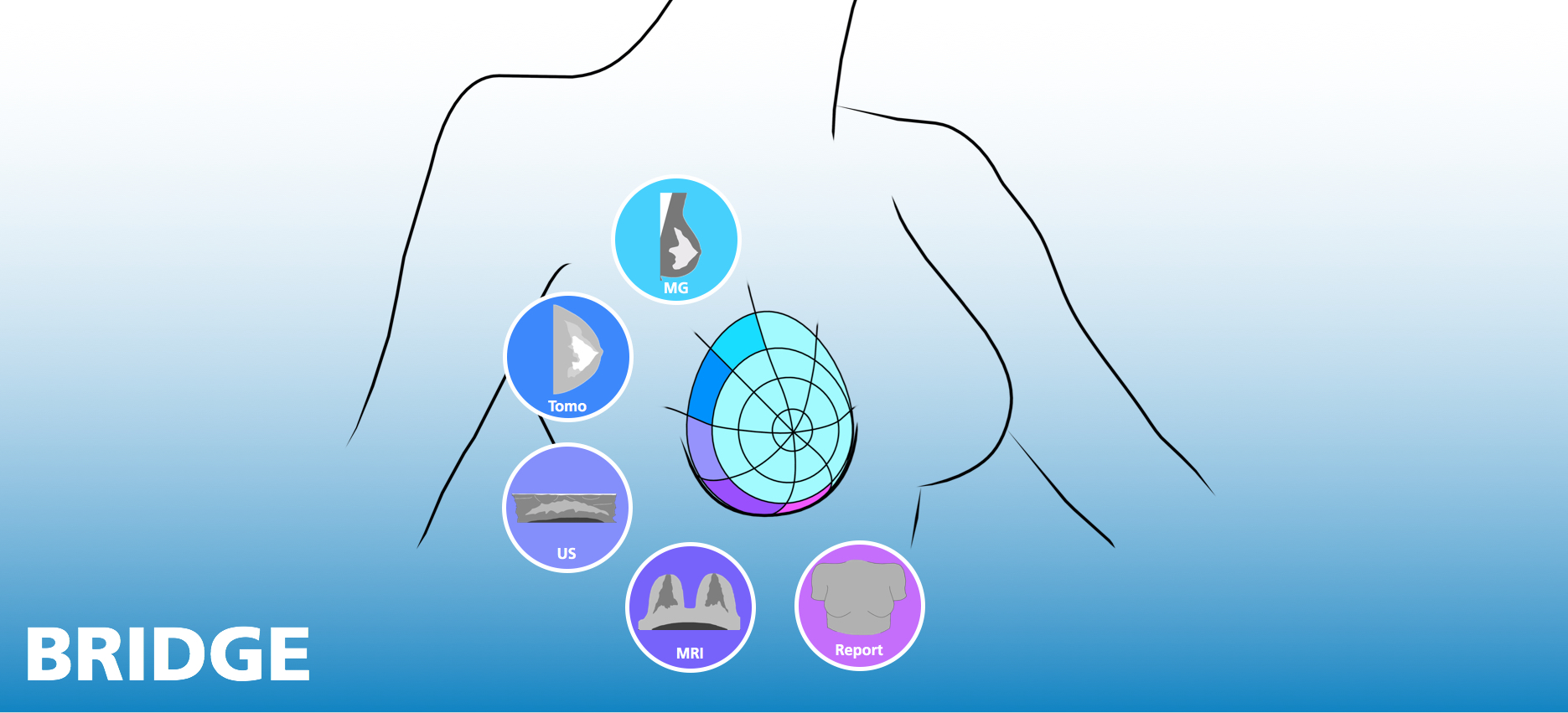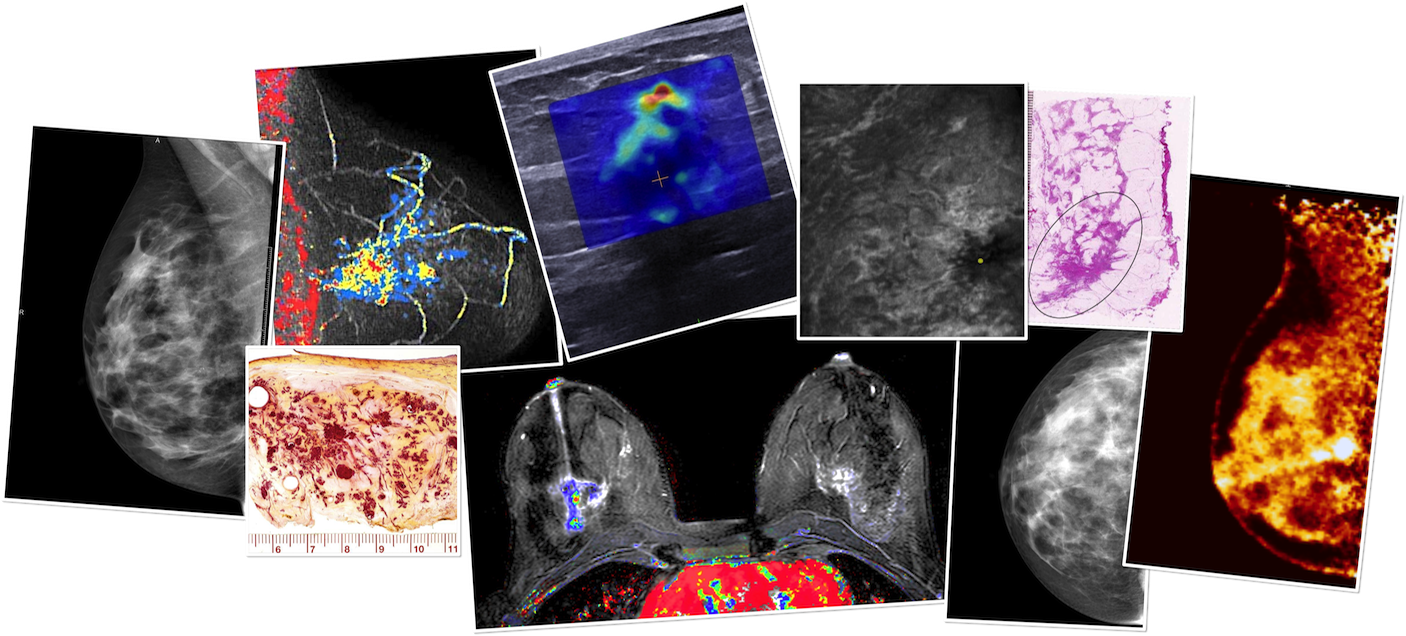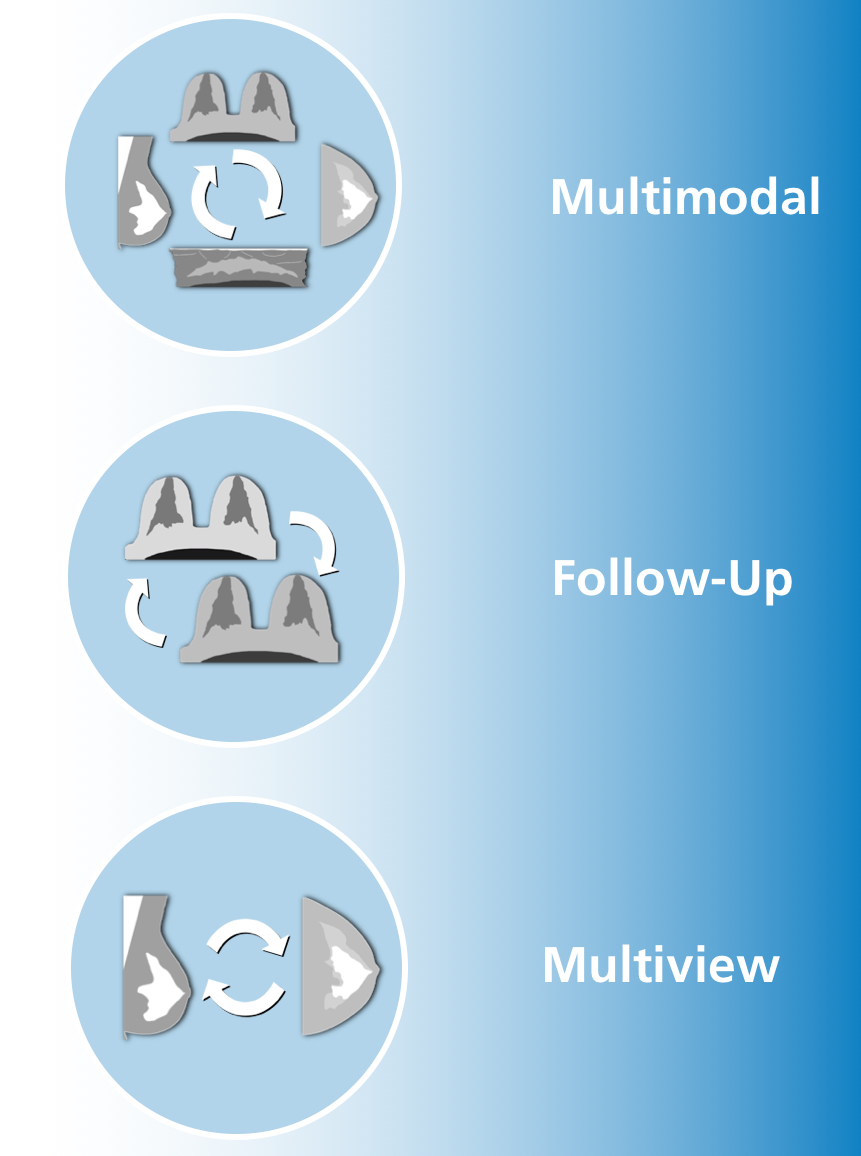
Position Correlation Between Multimodal Breast Images

A Dilemma of Modern Breast Diagnostics to be Solved
Breast radiology is based on images of different modalities and projections in order to increase the sensitivity and specificity of the diagnosis. While more information can show a clearer picture of the patient's situation, it emburdens radiologists to bring this information together. Different patient positioning leads to different tissue placement in the image. With more 3D modalities being used today, the task to manually find corresponding locations in different modalities becomes very complex and time consuming.

BRIDGE - Bringing Together what Belongs Together
Our software solution BRIDGE automatically maps breast images into a common simulted breast model. This allows us to describe image positions relative to important anatomical landmarks and patient positioning intead of arbitrary voxel positions. Our solution is based on sophisticated compression simulations of a finite element breast model to account for the nonlinear deformation of the breast tissue. The breast model is the basis for a position correlation between images and between the image world and the report world.

Multimodal Workflow Support with Real-time Image Correlation
Viewing multiple datasets at the same time to compare correlated tissue can be a challenging task. Our solution facilitates the radiologist's work by bringing relvant information together. Multiple datasets can be navigated at the same time, showing correlated image positions and corresponding image slices in real time. A standardized reporting view supports the orientation in large images.

Seamless Inclusion into Standard Reading Workflows
Typical diagnosis tasks include the comparison of images from different timepoints, views or modalites. Our automatic solution allows to perform these task without delay during the reading workflow. The standard modalities Mammography, Tomosynthesis, MRI and automated Ultrasound are supported with the possibilty to include further modalities in the future.
Simple Technical Integration into Existing Workstations
We generate flexible solutions to support the specific design of the customer's workstation. A small technical interface allows for an integration into workstations with little effort. Mac, Windows and Linux are supported.

Automatic Correlation Between Images and Reporting
Image findings are typically reported based on location and distances to landmarks to help communication between different image worlds and disciplines. Our solution automatically translates finding image positions into a standard format for reporting. Report positions can easily be translated back into images to allow for an automatic link between images and corresponding reports.

Watch a Video about BRIDGE
This is a modal window.
 Fraunhofer Institute for Digital Medicine MEVIS
Fraunhofer Institute for Digital Medicine MEVIS